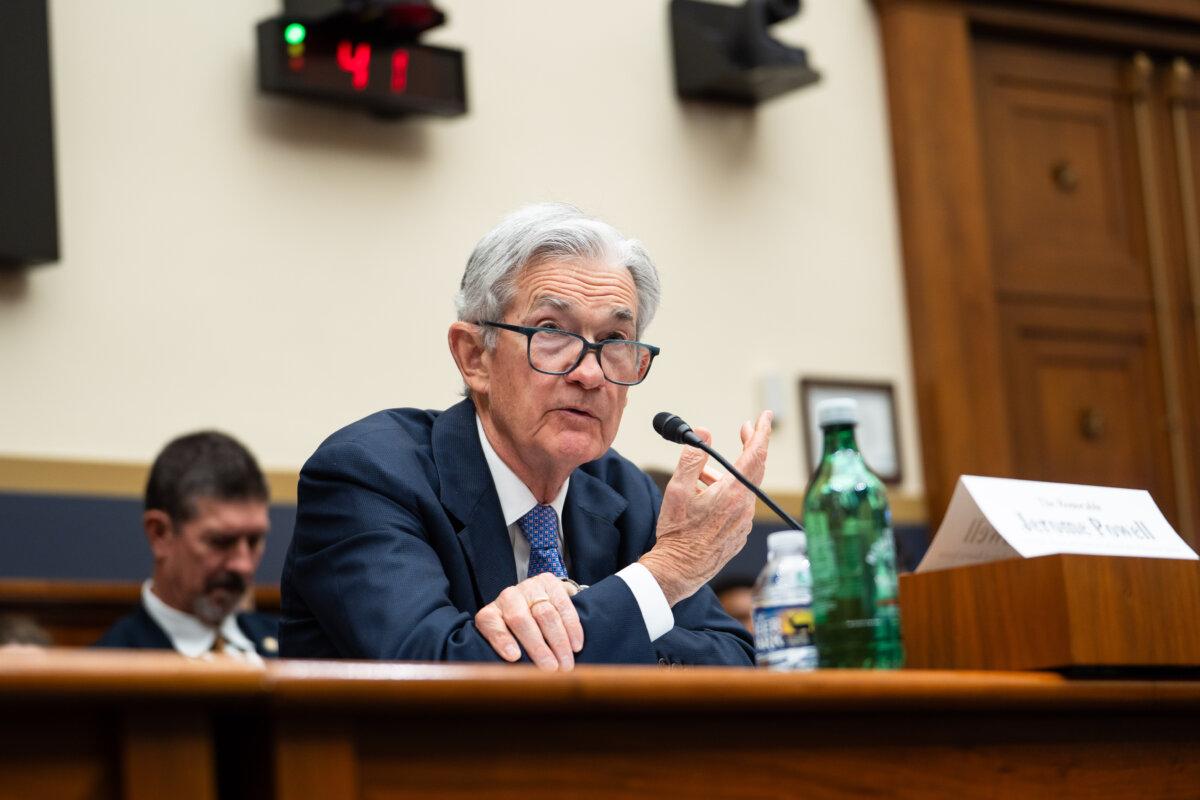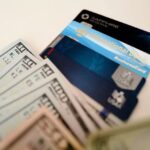By Andrew Moran
Americans are less worried about the economy and inflation as they shrug off President Donald Trump’s tariffs, according to the University of Michigan’s preliminary July survey.
The one-year inflation outlook, released on July 18, decreased to 4.4 percent from 5 percent in June, marking the second consecutive monthly decline. Likewise, the five-year forecast eased to 3.6 percent from 4 percent.
Expectations for short- and long-term inflation levels have come down from their two-decade highs and returned to pre-tariff levels.
“Both readings are the lowest since February 2025 but remain above December 2024, indicating that consumers still perceive substantial risk that inflation will increase in the future,” Joanne Hsu, the university’s director of consumer surveys, said in the report.
The Consumer Sentiment Index rose to its highest level since February, increasing to 61.8 from 60.7 in June. It has rebounded after cratering to near record lows in April and May, with this month’s reading topping the consensus estimate.
The flash estimate also revealed that consumers’ view of current economic conditions climbed to a higher-than-expected 66.8 from 64.8 in June. Additionally, economic expectations crept up to 58.6 from 58.1, surpassing market expectations.
However, the public’s confidence in the economy is unlikely to return to pre-tariff levels until they believe trade policy has stabilized and inflation will not worsen, Hsu noted.
“At this time, the interviews reveal little evidence that other policy developments, including the recent passage of the tax and spending bill, moved the needle much on consumer sentiment,” she said.
The next two gauges of consumer confidence—the Conference Board’s Consumer Confidence Index and the RealClearMarkets/TIPP Economic Optimism Index—could also show a bounce back following last month’s retreat.
Anchoring Inflation Expectations
Consumers’ inflation outlook suggests that they view tariff-driven inflation to be transitory, says one economist.
“Despite risks of rising consumer inflation in the next few months, consumers have well-anchored expectations that tariff inflation will be temporary, and that conditions should improve by the time we enter 2026,” Jeffrey Roach, chief economist at LPL Financial, said in a note emailed to The Epoch Times.
Since inflation projections are another data point for the Federal Reserve, the latest University of Michigan figures could be a positive development for monetary policymakers.
Anchored inflation expectations are critical to the Fed’s strategy for facilitating price stability. If the outlook is stable and businesses and consumers believe inflation hovers around the central bank’s 2 percent target, prices will not spiral out of control.
“Where individuals expect inflation to settle over the longer run has substantial influence on how firms set prices and workers negotiate their wages,” economists at the Kansas City Fed said in a May 2024 paper.
“For this reason, maintaining stable longer-term inflation expectations is critical to ensure periods of high inflation do not become embedded in price- and wage-setting behaviors.”

The New York Federal Reserve’s Survey of Consumer Expectations, a crucial report for monetary authorities, revealed that year-ahead inflation expectations slid to 3 percent in June from 3.2 percent.
Tariffs, Consumer Prices
U.S. consumers are experiencing an average tariff rate of about 20 percent, the highest in a century. Despite higher import duties, inflationary pressures have been subdued.
This week, a trio of inflation reports presented a mixed assessment of current inflation conditions.
The consumer price index (CPI) rose by 0.3 percent in June. Producer price index (PPI) inflation—a pipeline inflation measure of prices paid for goods and services by businesses—was zero percent last month. Import prices ticked up by 0.1 percent while export prices rose by 0.5 percent.
Data to suggest price pressures are forming in tariff-sensitive sectors has been mixed.
In the June CPI report, for example, indexes for new vehicles and used cars and trucks tumbled by 0.3 percent and 0.7 percent, respectively. However, the apparel index advanced by 0.4 percent.
Declines in a batch of items could counterbalance price increases for one set of goods, says Bill Adams, chief economist at Comerica Bank.
“Tariffs are raising the prices of goods but are being offset by lower prices of nontraded services,” Adams said in a note emailed to The Epoch Times.
“The inflationary impact of tariffs will likely increase in [the] coming months; even so, weak business pricing power may continue to blunt their effect on inflation.”
In a July 18 interview with Bloomberg Television, Fed Governor Christopher Waller said that some tariff-related costs will be passed on to customers, but not in a way that would lead to persistent inflation.
“As long as it’s a one-time tariff and that’s it, that’s a one-time price effect,” Waller said. “You could not get, in any serious economic model, persistent inflation.”
Later this month, inflation in the personal consumption expenditures (PCE) price index for June is expected to increase to 2.5 percent and rise to 0.2 percent month-over-month, according to the Cleveland Fed’s Inflation Nowcasting model. The July report is also expected to come in at 2.5 percent and rise by 0.2 percent monthly.
Fed officials place more weight on the PCE than the CPI because the former has broader coverage and adjusts for consumer behavior more quickly than other measurements.
The recent data are not expected to influence the U.S. central bank to follow through on an interest rate cut at the July Federal Open Market Committee meeting. CME FedWatch Tool data indicate that investors are penciling in a quarter-point reduction to the benchmark federal funds rate—a key policy rate that influences business, consumer, and government borrowing costs—in September.





